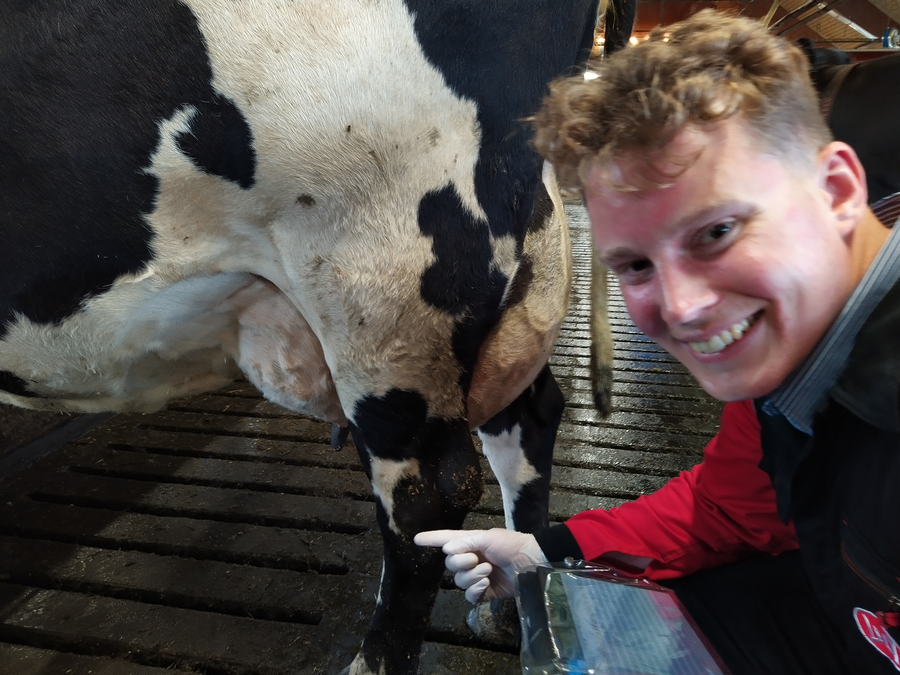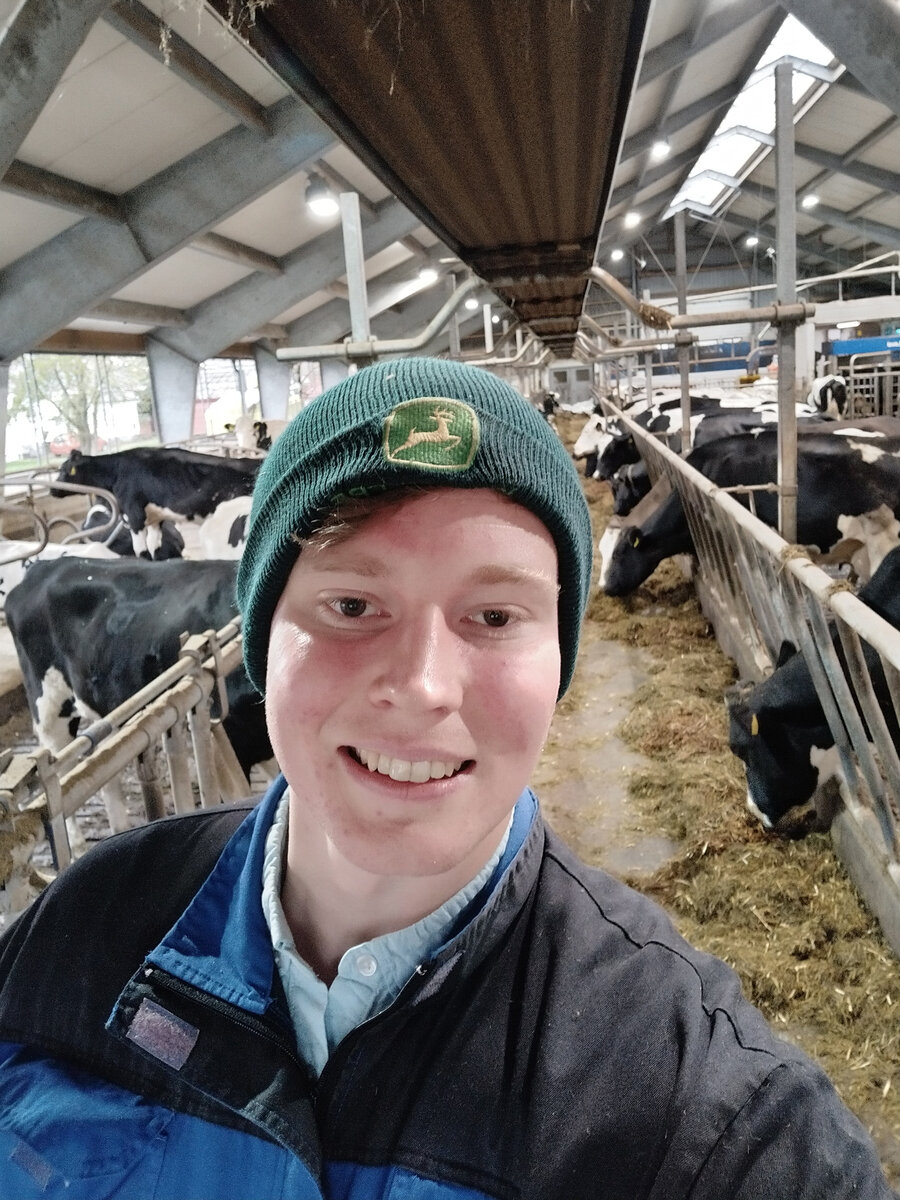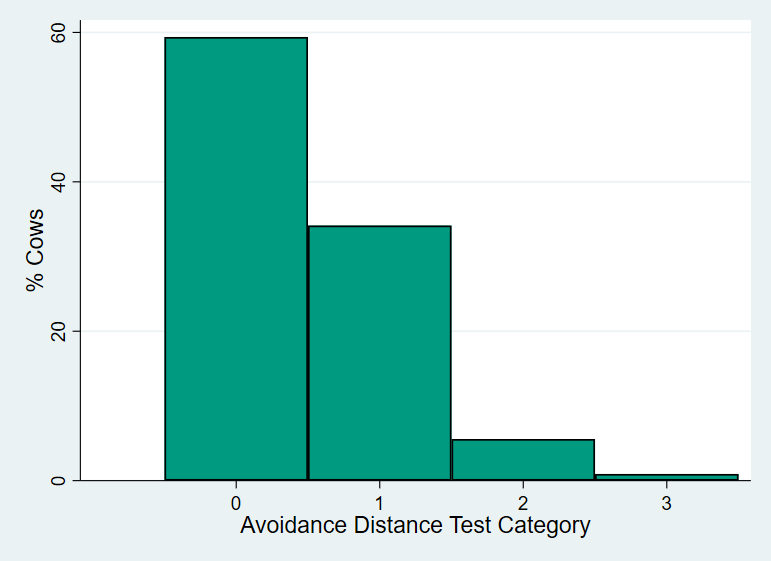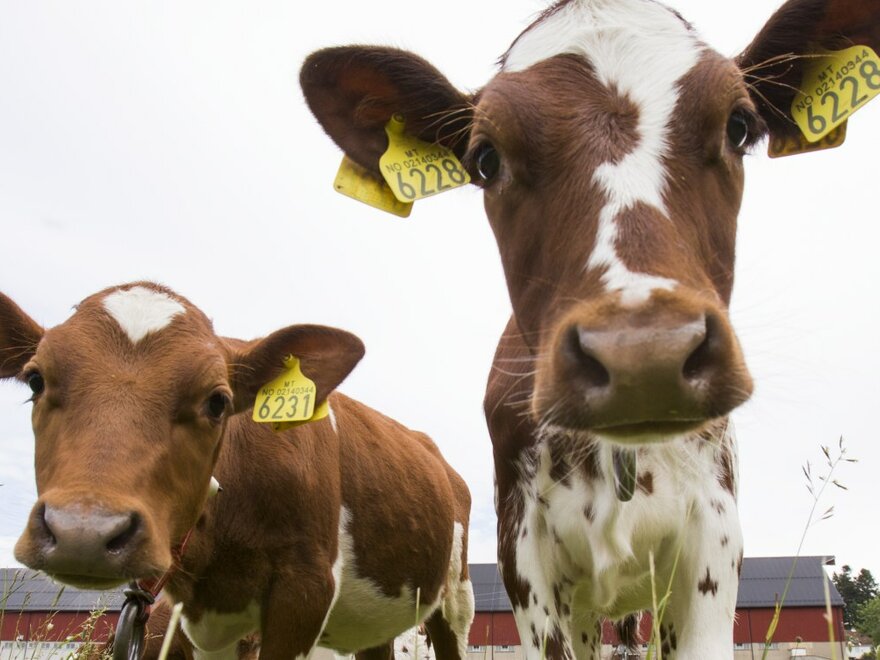Testing the relationship between cows and humans can give a good indication of this important aspect of animal welfare. In Norway, results show that the cows are generally confident and trusting and that Norwegian farmers interact well with their animals.
The research project WelCow assessed animal welfare in Norwegian dairy herds. Last year, the researchers travelled around the country, visiting approximately 160 loose-housed herds.
To assess animal welfare on-farm, they used the EU Welfare Quality© protocol, measuring 27 different aspects of animal welfare. Each farm visit lasted several hours and included many different observations and investigations.
The human-animal relationship is important for animal welfare
Following the farm visits, the researchers are analysing the data. Part of the protocol involves testing the relationship between cows and humans.
– The relationship between the farmer and their cows can have a lot to say for the welfare of the animals, and therefore it is important that it is also examined during a welfare assessment, as we have done. And it's nice to see that the results in Norway are very good, says PhD candidate Conor Barry, who has travelled kilometre after kilometre in a motorhome to visit herds all over central and southern Norway.
In order to measure how confident and trusting the cows are around people, the researchers have carried out a standardized test on 5,617 cows.
– It is a very simple test, but with strong scientific evidence. It is widely used and has been shown to reliably indicate how the animals experience contact with humans, says Barry.

Measures how close one can approach the cow
In the test, the researcher starts two meters from the cow and then begins to move very slowly and with outstretched hand towards it, with one step every second. And then the researcher estimates the distance between their hand and the cow when the cow eventually pulls away.
– If the cow is very confident, we can usually touch it. The more insecure they are, the sooner they will withdraw, Barry explains.
Each test gives a score from 0 to 3. A score of 0 means that the researcher could touch the cow. A score of 1 means that there was a distance of between 10 and 50 cm between the researcher and the cow when the cow pulled away. If it was between 60 cm and one metre, the score was 2, and if the cow pulled away while there was still more than a meter distance from the researcher's hand, the score was 3.
– The results from Norway are very good, and also very good compared to similar studies in other countries. Cows in Norway are often calm, trusting, friendly and comfortable around people, says Barry.

Small herds and few people
He believes the size of the herds is much of the reason for the good results.
– The fact that we have small herds means that there are fewer people working in the barn, and they work more closely with the animals so that the cows get to know them and feel safe around people in general. The test is carried out by a person the cow has not met before, and in this way, we get an idea of how the cow perceives humans in general.
He says that the tests correspond with what the researchers have observed when they have traveled around on barn visits.
– Norwegian farmers interact well with their animals, building good relationships. It simply means that they are kind to the animals and work calmly and in a way that is comfortable for the cows.
Animal welfare is complex
The results show that 94 percent of the cows that were tested were placed in the two best categories (0 and 1), and the researchers were able to touch 59 pe cent. Only 5.6 percent were a little afraid of people and less than 1 percent were really not comfortable and confident around humans.

– The tests are done on an individual level, so the different scores are distributed across all the herds, explains Barry.
He is careful to emphasize that the overall animal welfare status of a farm cannot be judged on the basis of this test alone.
– What constitutes good animal welfare is a very complex question. In the EU protocol we use, there are, as I said, 27 different things that must be measured before we can say anything about the overall status of animal welfare in a herd or at national level. It may be the case that that the cows that are not confident with people are doing very well in other ways. They may be healthy animals that get to spend a lot of time grazing, for example.
– Therefore, we look forward to continuing our investigations and analysing all the data we have collected from the farms we have visited.

WelCow:
Improving animal welfare in dairy herds
Research project site
